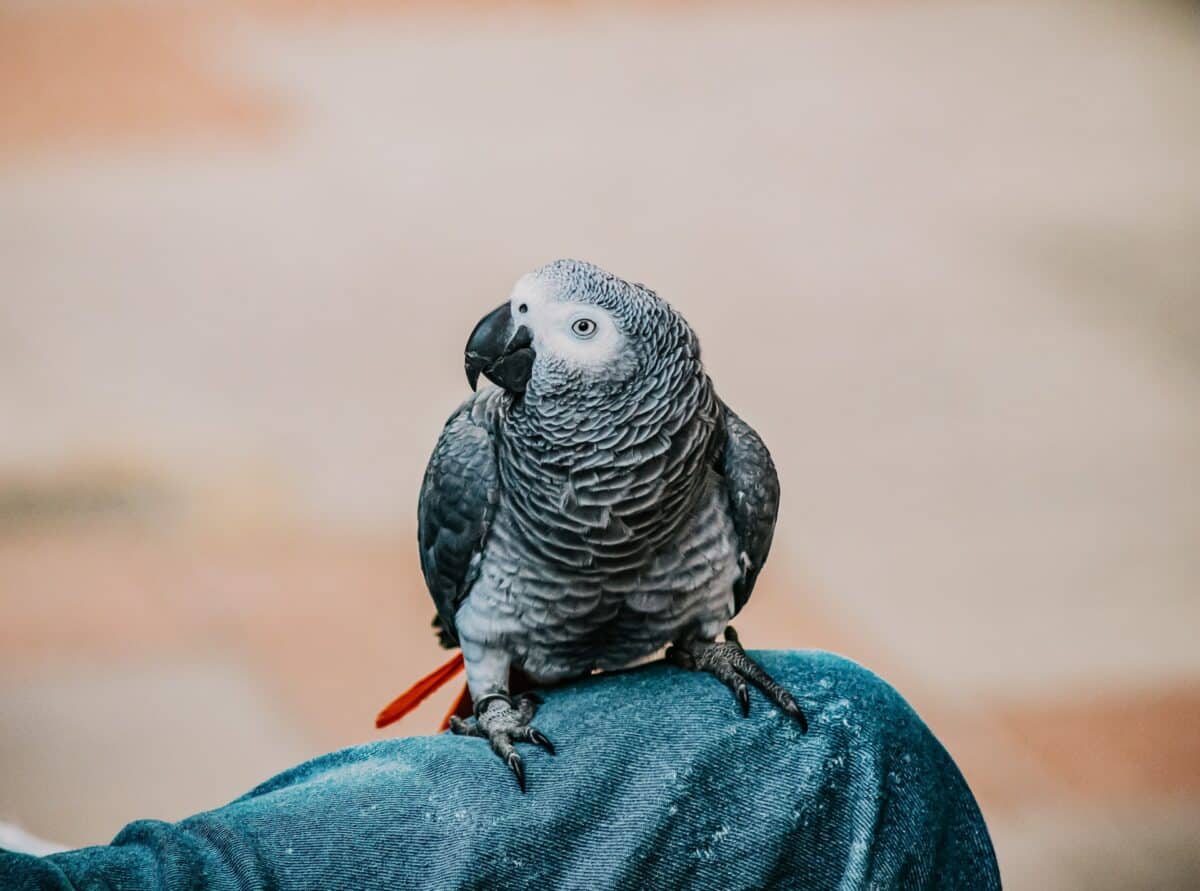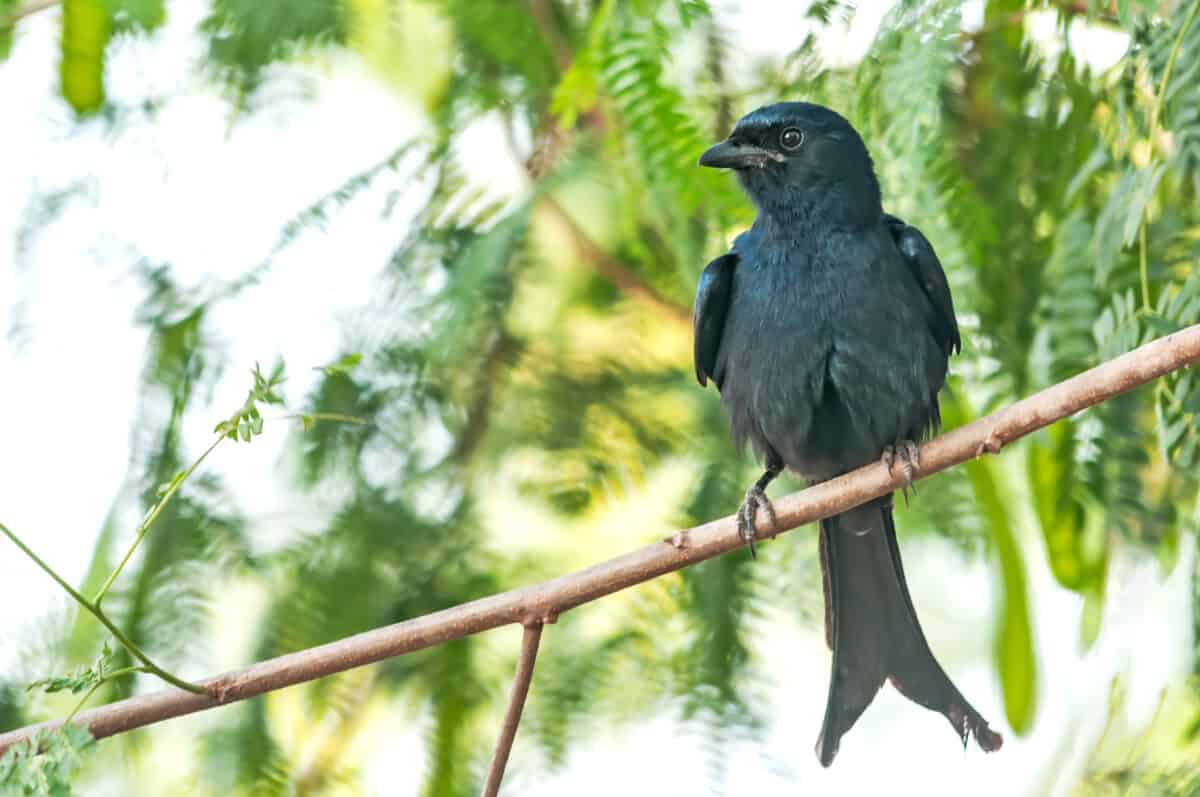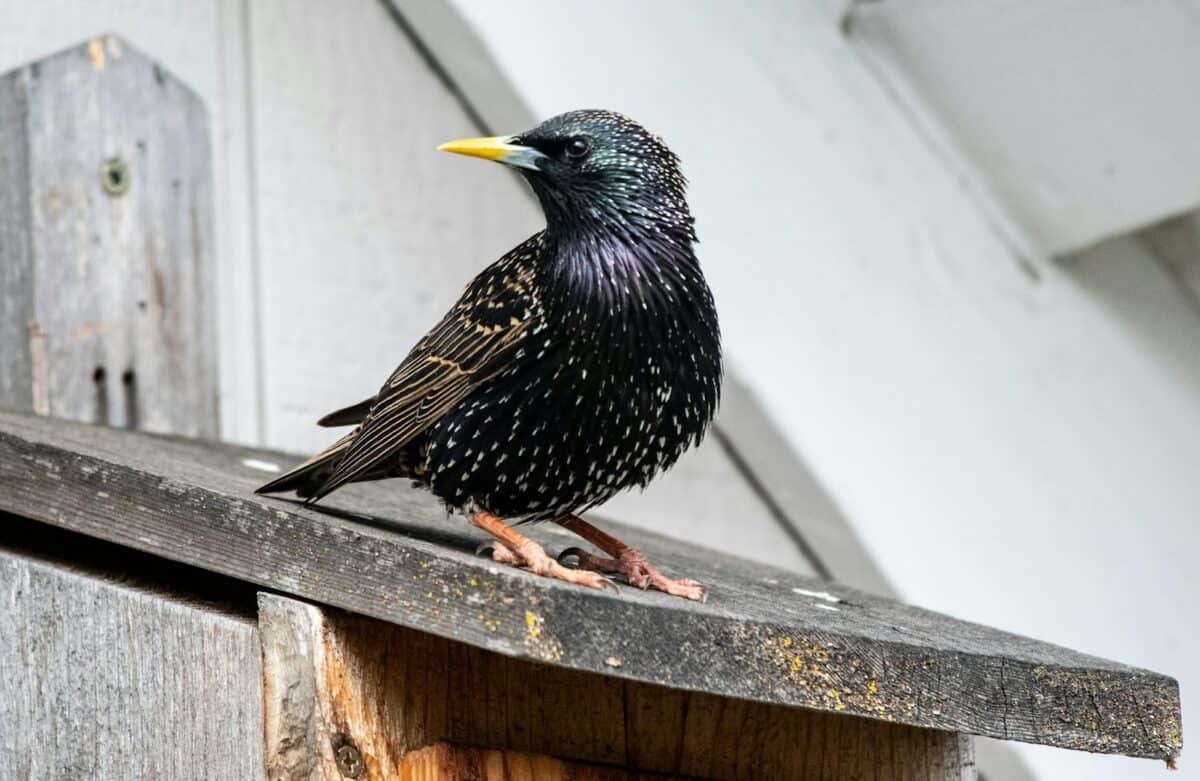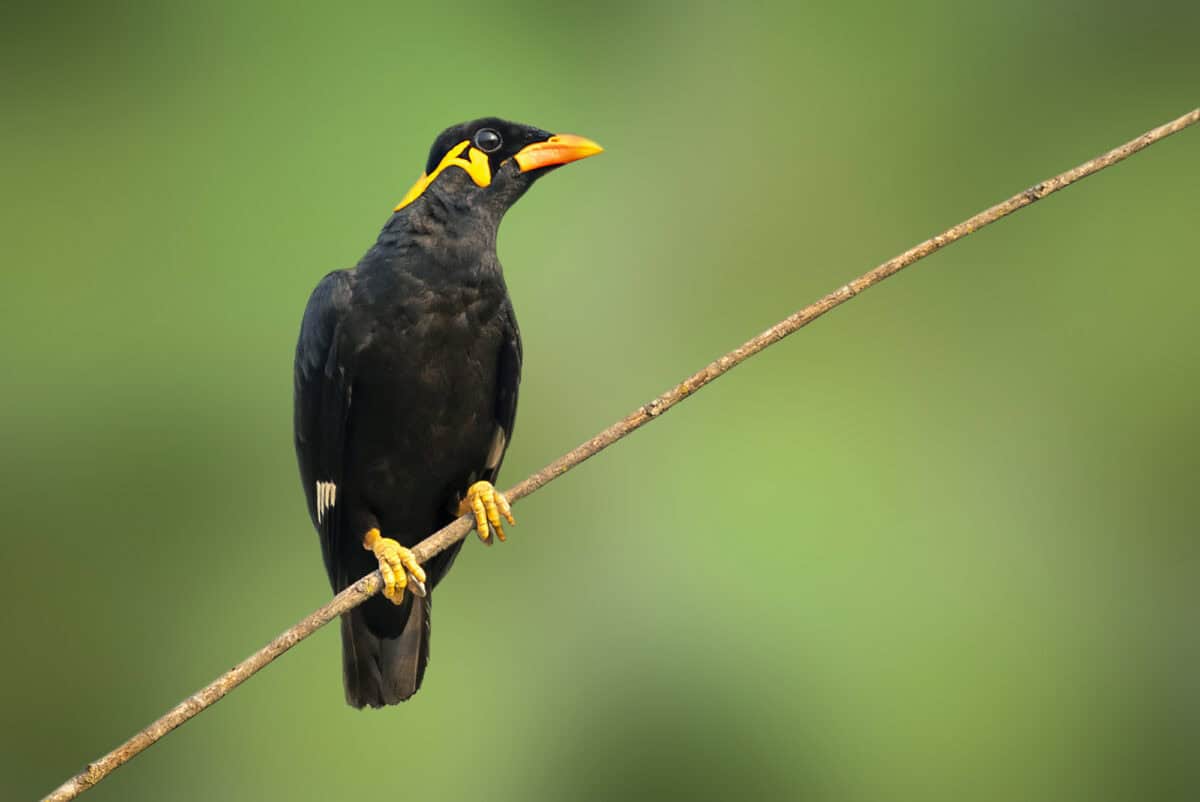In the avian world, mimicry serves as both a powerful defense mechanism and a sophisticated communication tool. Many bird species have evolved remarkable abilities to replicate sounds from their environment, from other birds’ calls to human speech and even mechanical noises. This extraordinary skill offers various survival advantages, from attracting mates to deterring predators. Let’s explore ten remarkable avian mimics that demonstrate the evolutionary brilliance of sound imitation in the natural world.
The Evolutionary Advantage of Avian Mimicry

Mimicry in birds represents one of nature’s most fascinating evolutionary adaptations. Unlike physical camouflage that helps creatures blend visually into their surroundings, vocal mimicry allows birds to acoustically adapt to their environment. This skill develops through a combination of innate ability and learning, with some species possessing specialized brain structures dedicated to sound memorization and reproduction. Mimicry serves multiple survival functions: it can confuse predators, enhance territorial defense, increase mating success, and in some cases, facilitate parasitic behaviors where certain species trick others into raising their young. The complexity and accuracy of mimicry vary widely among species, with some birds capable of reproducing hundreds of distinct sounds with remarkable precision.
The Lyrebird Nature’s Premier Sound Mimic

The superb lyrebird (Menura novaehollandiae) of Australia stands as perhaps the world’s most accomplished avian vocal mimic. This ground-dwelling bird can replicate virtually any sound it encounters with astonishing accuracy – from the calls of at least 20 other bird species to environmental sounds like camera shutters, car alarms, chainsaws, and even human speech. Male lyrebirds incorporate these imitations into elaborate courtship displays, performing on carefully maintained mound stages in the forest. Their extraordinary vocal abilities stem from having the most complex syrinx (vocal organ) in the bird world. David Attenborough’s famous BBC documentary footage of a lyrebird mimicking construction noises showcased this remarkable talent to global audiences. The lyrebird’s mimicry serves primarily as a sexual selection mechanism, with males that demonstrate the most impressive vocal repertoires attracting more mates.
African Grey Parrot The Cognitive Mimic

The African Grey Parrot (Psittacus erithacus) represents mimicry with a cognitive twist. Unlike many birds that simply reproduce sounds, African Greys demonstrate the ability to associate words with meanings and use human language in context. Research subjects like Alex, studied by Dr. Irene Pepperberg, have shown vocabulary capacities exceeding 100 words, with the ability to identify colors, shapes, numbers, and materials. In the wild, this extraordinary intelligence and vocal flexibility helps African Greys navigate complex social structures within their flocks. Their mimicry skills likely evolved as a way to identify flock members and maintain group cohesion in dense forest environments. The species’ remarkable cognitive abilities, combined with their vocal talents, make them particularly vulnerable to the pet trade, where their population has suffered significant declines due to capture and habitat loss.
Mockingbirds Masters of Melodic Mimicry

The Northern Mockingbird (Mimus polyglottos), whose species name literally means “many-tongued mimic,” exemplifies vocal versatility. These North American natives can learn and reproduce up to 200 distinct songs throughout their lifetime, including the calls of other birds, insects, amphibians, and even mechanical sounds. Unlike some mimics that blend imitations into their native songs, mockingbirds often perform each copied sound with remarkable clarity before switching to the next, creating medleys that can continue for 20 minutes without repetition. Male mockingbirds with the most diverse repertoires are more successful in attracting mates, demonstrating how mimicry directly enhances reproductive success. They also use their vocal talents aggressively in territorial defense, singing day and night (particularly during breeding season) to announce their presence to potential rivals. This behavioral adaptation has made mockingbirds highly successful adaptable birds that thrive even in urban environments.
The Greater Racket-tailed Drongo The Deceptive Mimic

The Greater Racket-tailed Drongo (Dicrurus paradiseus) of South and Southeast Asia employs mimicry as a sophisticated form of deception. These glossy black birds with distinctive racket-shaped tail feathers have been documented imitating alarm calls of other species to create false panic. When other birds flee from perceived danger, the opportunistic drongo swoops in to steal their abandoned food. Research has shown that drongos can mimic the alarm calls of at least 45 different species, including mammals like squirrels. What makes their strategy particularly sophisticated is their ability to switch between different mimicked alarm calls when their targets become wise to their tricks. This represents one of the clearest examples of tactical deception using vocal mimicry in the animal kingdom. Beyond kleptoparasitism (food stealing), drongos also use mimicry to enhance their own legitimate alarm calls, incorporating the warning sounds of multiple species to create more compelling danger signals that benefit mixed-species foraging flocks.
Starlings Virtuosos of Varied Vocalization

The European Starling (Sturnus vulgaris) demonstrates how mimicry can help an introduced species become one of the world’s most successful avian invaders. These iridescent birds, now abundant across North America following their introduction in the 1890s, possess remarkable vocal learning capabilities. A single starling can incorporate parts of songs from dozens of other bird species, along with environmental sounds ranging from car alarms to human speech, into its complex repertoire. Male starlings use these diverse vocalizations primarily during breeding season, with evidence suggesting that females prefer males with more complex songs containing greater mimicked components. This sexual selection pressure continuously drives the evolution of more sophisticated vocal abilities. Starlings also demonstrate a unique form of vocal development called “song crystallization,” where young birds experiment with a wide range of sounds before settling on their adult repertoire. Their mimicry skills have made them subjects of scientific research on vocal learning and may explain part of their success in adapting to new environments worldwide.
The Australian Magpie The Cooperative Mimic

The Australian Magpie (Gymnorhina tibicen) uses its exceptional mimicry abilities in the context of complex social structures. These highly intelligent birds live in territorial family groups and develop distinctive group “dialects” that incorporate mimicked sounds. Young magpies learn not only from their parents but also from the broader social group, with mimicry serving as a form of cultural transmission. Australian magpies can accurately reproduce the calls of at least 35 different species of birds, as well as other environmental sounds including human speech, dog barks, and even mobile phone ringtones. Research suggests that magpies in urban environments incorporate more human-associated sounds into their repertoires, demonstrating behavioral plasticity that helps them adapt to changing soundscapes. Their mimicry serves multiple functions beyond mate attraction, including territorial defense and group cohesion. The complexity of magpie vocal learning has made them important subjects in studies of avian cognition and culture.
Bowerbirds Decorative and Vocal Mimics

Male bowerbirds, particularly the Satin Bowerbird (Ptilonorhynchus violaceus) of Australia, demonstrate how mimicry can complement visual displays in courtship rituals. These remarkable birds are already famous for constructing elaborate bowers (display structures) decorated with collected blue objects to attract females. Less well-known is their sophisticated vocal mimicry, where males incorporate the calls of other forest species into their courtship songs. Research has shown that female bowerbirds spend more time at bowers where males perform more accurate and diverse mimicked calls, suggesting that vocal mimicry serves as an honest signal of cognitive ability. Satin bowerbirds can imitate up to 20 different species, with particular focus on accurately reproducing the calls of predatory birds. This aspect of their mimicry may demonstrate to potential mates that the male is vigilant and knowledgeable about potential threats in the environment, further enhancing his attractiveness. The dual nature of bowerbird display—both visual and vocal—offers fascinating insights into the evolution of complex courtship behaviors.
The Marsh Warbler The Transcontinental Mimic

The Marsh Warbler (Acrocephalus palustris) stands out among mimics for incorporating sounds from both its European breeding grounds and its African wintering territories into a single song repertoire. These small, plain-looking birds undertake long migrations between Europe and sub-Saharan Africa each year, and remarkably, can mimic over 200 different species encountered across these diverse habitats. Young marsh warblers learn their complex songs during their first winter in Africa, memorizing the calls of local species, then return to Europe where they incorporate these exotic sounds into their breeding songs. Researchers have actually used spectrographic analysis of marsh warbler songs to identify their specific wintering locations in Africa based on which regional bird calls they’ve incorporated into their repertoires. This transcontinental mimicry not only demonstrates remarkable memory capacity but may function as a form of “acoustic plumage”—a way for males to advertise their successful migration experience to potential mates. The marsh warbler’s mimicry offers valuable insights into the cognitive capabilities of migratory birds and the complex relationship between movement ecology and communication.
The Yellow-throated Honeyguide Parasitic Mimicry

The Yellow-throated Honeyguide (Indicator indicator) of sub-Saharan Africa employs mimicry as part of an extraordinary parasitic breeding strategy. These birds are brood parasites that lay their eggs in the nests of barbets and woodpeckers, relying on these host species to raise their young. What makes their mimicry remarkable is that young honeyguides can imitate the begging calls of their host species’ chicks with uncanny accuracy, despite never having heard these calls before. This innate mimicry ability ensures the honeyguide chicks receive adequate food from their foster parents. More sinisterly, newly hatched honeyguides possess sharp hooks on their bills that they use to kill the host’s actual offspring, eliminating competition for parental care. After this grim deed, their perfect mimicry of the now-deceased host chicks fools the parent birds into continuing to feed the impostor. This represents one of nature’s most dramatic examples of vocal mimicry directly contributing to survival and reproductive success, demonstrating how evolution can produce highly specialized adaptations even in vocal behavior.
The Common Hill Myna The Conversational Mimic

The Common Hill Myna (Gracula religiosa) of South and Southeast Asia has earned worldwide recognition for its exceptional ability to mimic human speech with remarkable clarity and intonation. In the wild, these glossy black birds with distinctive yellow facial patches and wattles use their mimicry skills to maintain territorial boundaries and strengthen pair bonds. They naturally imitate the calls of numerous other forest birds and animals within their habitat range. Their extraordinary vocal abilities stem from the structure of their syrinx and specialized brain regions dedicated to sound learning and reproduction. Wild mynas typically have repertoires of 10-15 different calls and can learn throughout their lives. This natural mimicry predisposition, combined with their social nature, makes captive hill mynas among the most accomplished avian speakers, capable of learning hundreds of words and reproducing them with human-like inflection. Unfortunately, this talent has made them targets for the pet trade, leading to population declines in parts of their range despite legal protections. Their remarkable vocal learning abilities make them valuable subjects for research on the neurological basis of vocal learning.
Conclusion: The Evolutionary Symphony of Avian Mimicry

The remarkable diversity of mimicry strategies among these ten bird species illustrates the power of natural selection to shape communication systems for survival advantage. From the deceptive food-stealing tactics of the drongo to the mate-attracting performances of the lyrebird, vocal mimicry has evolved independently numerous times across the avian family tree, suggesting its significant adaptive value. These extraordinary abilities not only provide fascinating insights into avian intelligence and learning but also raise important questions about the evolution of communication systems more broadly. As human activity continues to transform natural landscapes and soundscapes worldwide, the future of these acoustic specialists depends on our ability to preserve the rich sonic environments that shaped their remarkable talents. By understanding and protecting these feathered mimics, we safeguard not just individual species but the complex web of acoustic relationships that form an essential yet often overlooked dimension of biodiversity.
- The Most Elusive Big Cats Roaming the American Southwest - August 20, 2025
- 13 Animals That Use Tools to Hunt - August 20, 2025
- 14 Creatures That Don not Need Eyes - August 20, 2025

